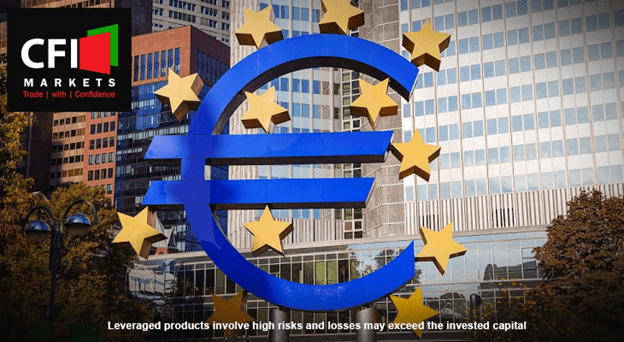The following article was written by Reem Aboul Hosn, Research and Market Analyst Officer at CFI Markets Ltd.
Euro’s January surge followed the release of minutes from the December European Central Bank meeting showing the bank’s intention to reconsider its easing monetary policy in early 2018. While this week, ECB maintained its pledge to move slowly in removing euro area stimulus. Policymakers assured that they will continue buying 30 billion euros of assets per month until the end of September and keep borrowing cost and interest rates unchanged.
Committed to reach inflation rate targets, ECB President Mario Draghi, did not surprise the market by assuring that quantitative easing will run until sustained inflation adjustment reaches level below but close to 2% in the medium term; and that data confirm robust pace in economic growth. On an alternative verge; uninterrupted high euro rates can disrupt global markets, and damage trade balance on major counties.
What does strong Euro means to the economy?
Policymakers are growing more alert to the euro’s strength against the dollar as it has the ability to curb exports and ultimately the overall growth. As the euro zone economy is currently hovering along decade high of 2.5% per year; a continued euro strength reduced ECB inflation assumption for 2018 from 1.5% to 1.4% moving away from ECB inflation target rates of 2%, which would reduce the predictions of sudden end to quantitative easing this year.
In December 2017, inflation rate fell to 1.4% from 1.5% in November, as reported by ECB statistical data warehouse, with such rates the euro can still bear to appreciate in value however; ECB is better off discouraging any further euro rise to avoid disruption of international trade balance.
Last December, ECB president Mario Draghi delivered a positive press conference and convinced investors that the quantitative easing will end sooner than expected which helped with the sharp climb of the euro. In contrast, this week’s speech seemed less optimistic to reduce the amplified pace of the euro currency, and convince market makers that rate increases are not in the horizon of 2018. At the same time the breakthrough in Germany coalition talks puts more pressure on the dollar against the euro.
Dollar Twice Bitten:
At a three year low, the dollar weakness, worsened by the US government shutdown and backed up by mere fact that major central banks are moving closer to adopting normal policy; last year widening interest rate differential between US and other major economies has failed to keep the dollar high. Going forward, international structure shift may be underway to bridge the gap between the Federal Reserve policymaker and ECB’s attempt to modify its monetary policy.
For investors, dollar weakness is echoed as good news as it loosens global financial conditions and escalates equity markets. In contrast to its effect on the country, as a decline in the currency tends to push imports prices and thus inflation rates lower.
Now, the return on short term treasury bonds exceeds that on equities. Given that investors chase high returns, there is a probability capital markets could gain appetite for the dollar and boosts investors’ confidence.
EUR/USD reaction:
The euro has already strengthen 14% against the dollars between 2017 and early 2018 trading above resistance levels of 1.2400 this week.
